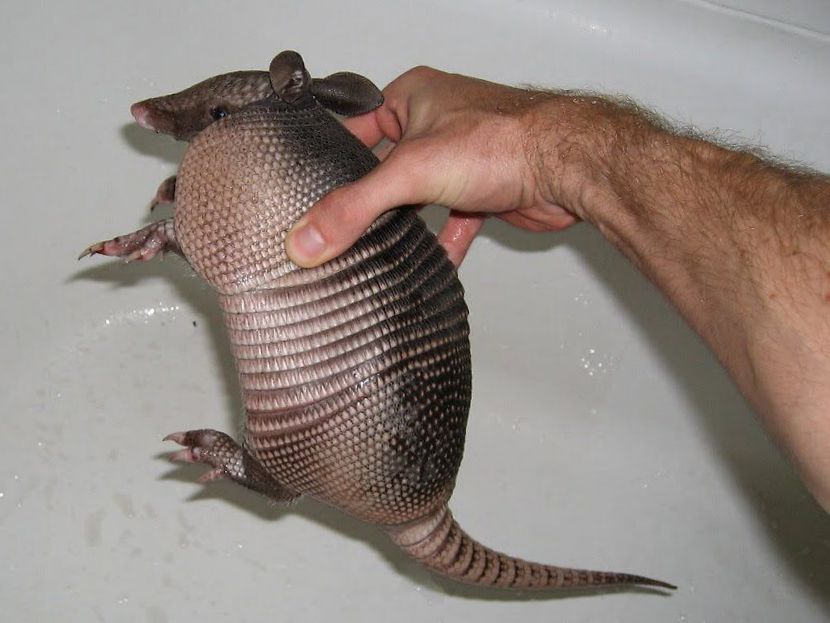
Would you like the good news or the bad news? Because there's plenty of one and not enough of the other when it comes to answering these questions.
Good News
Repellents for armadillos are reportedly plentiful, with many options to pick from, some of which are entirely natural and risk-free. Sadly, that's pretty much where the good news ends. Property owners very often try their hand at repellents and other "natural" remedies before calling in the professional, in the hope that they can do the job cheaper and much faster by themselves.
Bad News
In almost all wild animal cases where a property owner tries repellents or diy trapping removal, a large amount of money is spent on the items needed to get the job done. The jobs are often failed ones, and that's when we get the call.
"Please help me get rid of the armadillo in my back garden!"
Hiring a professional is frequently the cheapest option. Give us a call for an armadillo removal quote and you might just be pleasantly surprised!
Armadillo Repellents
If you ARE going to try your hand at repellents, these are a few that you'll find advised on the internet, as well as available in stores:
- Mothballs
- Ammonia-soaked clothes
- Predator urine
- Armadillo decoys
- Vinegar
- Ultrasonic (sound) devices
- Castor oil
- Water sprinklers
Armadillos live underground in burrow systems. You will need to work out where that burrow is and then apply your repellents in that area. Some burrow tunnels can be abandoned or are no longer regularly used, and using repellents in those particular areas are obviously not going to have any effect. You could buy 10 boxes of mothballs, pour those mothballs into the burrow, and still have a problematic armadillo on your property, and this is a story that we hear from desperate home and property owners a lot. Much more than you'd think.
Anything that you put into the ground is going to have an effect on that ground, too. Using chemicals such as ammonia and mothballs is not a good idea unless you want to contaminate the ground. Going back to using mothballs for armadillos again, they're usually trodden or buried into the earth around the burrow, by the animal. The more buried it is, the less the mothball will smell, and the less of an impact it will have on the armadillo.
Repellents will need to be regularly reapplied if you want them to work, especially after rain or bad weather. This can bump the price up, too. If you're buying 10 boxes of mothballs to throw around the burrow system you think the animal is using (with only a couple of them actually in the vicinity of the animal), you'll then need to buy further mothball boxes to replace the ones that lose their effect, get buried into the earth, or are displaced by the animal. You may even buy more mothballs because it seems as though the first batch you put down isn't working.
Here's an essential tip: if the armadillo repellent doesn't work the first time you try it, it's probably not going to work a second or third time, or with increased dosages of that repellent.
Anything electronic you buy to repel an armadillo is probably going to be more expensive to buy, and will require maintenance and perhaps running costs. If the device is plugged into the mains, you'll have an added feature on your energy bill. If the device runs on batteries, you'll need to replace those batteries. Solar powered devices basically run themselves, but you still may require more than one to completely cover and protect your property. One particular device that we looked at cost $50 and only covered an area of 7 meters. If the area you need to protect and cover (your back yard) is more than 7 meters in any direction, you'll need to purchase more devices. That bumps the price up … again.
If you're using a water-based device, you'll need to consider the cost (and environmental) impact. You'll be paying for the water you use, and a buildup of that water underground could be incredibly detrimental. You've got a tunnel system (holes) and a buildup of groundwater … It's a recipe for disaster. Can you be so sure the ground won't give way?
Anything you use in the backyard could have an effect on something else — it's like the butterfly effect. Any chemical-based armadillo repellents are probably going to contaminate soil and/or water sources and potentially destroy vegetation. Those same items could also prove deadly to wild critters, especially when you're talking about ammonia and the toxic gases it gives off. There's a greater chance that you will kill an animal using ammonia or ammonia-soaked rags in a burrow, than you will repel it from your property.
Can repellents work to get rid of armadillos?
We don't personally believe that you'll have much success removing this animal from your back yard using just armadillo repellents, but we will be on hand for the call you'll want to make in a couple of weeks.
Armadillo removal… it's tougher than you'd think.
Go back to the armadillocontrol.com home page.
Copyright 2021 - armadillocontrol.com
Nationwide Armadillo Control